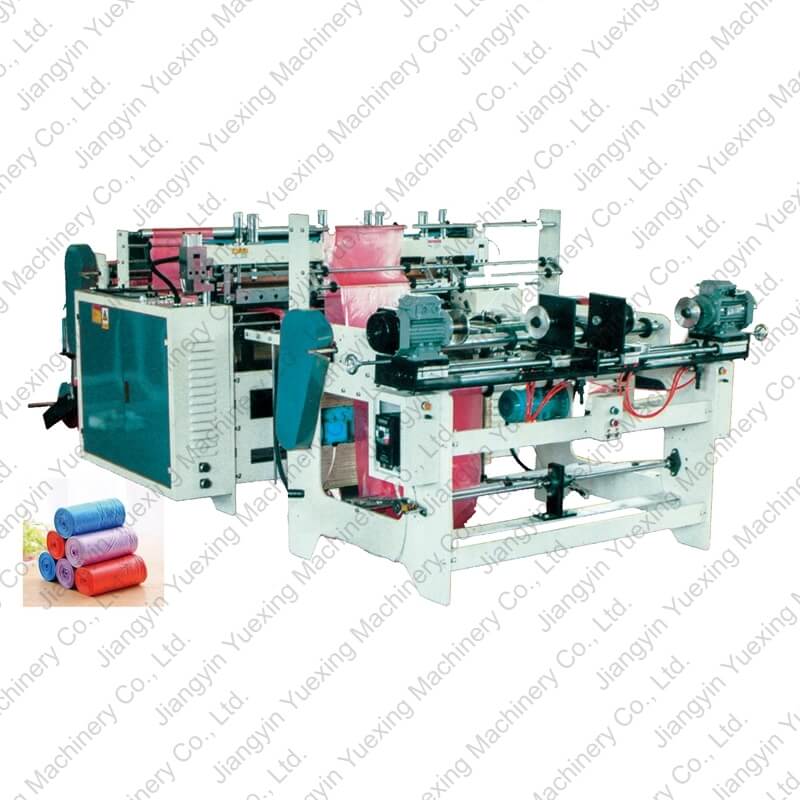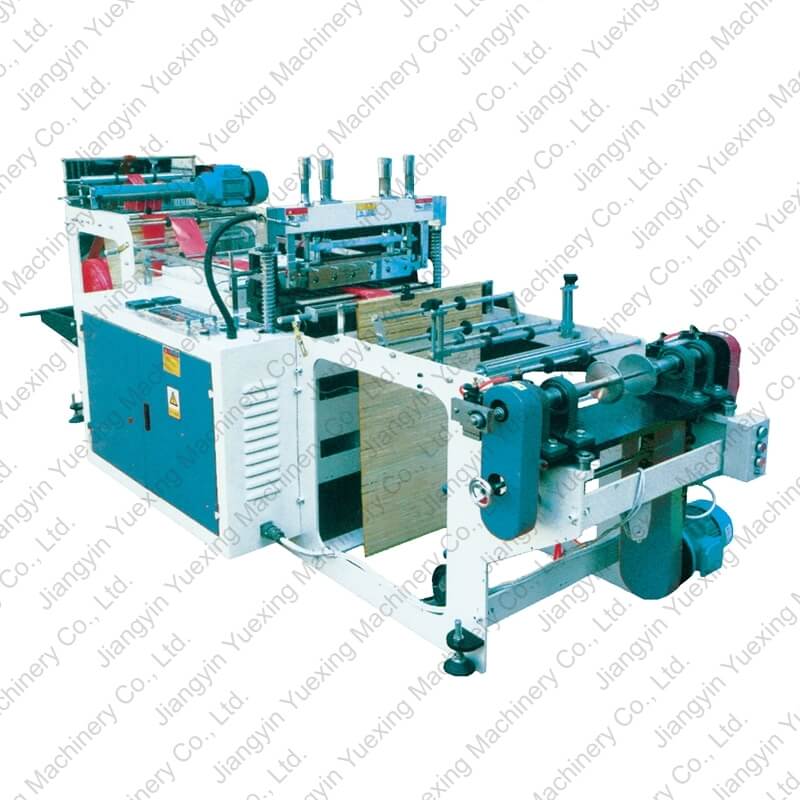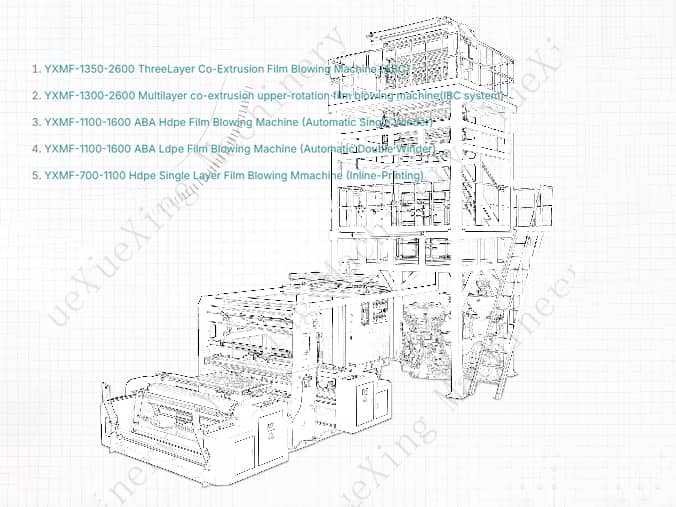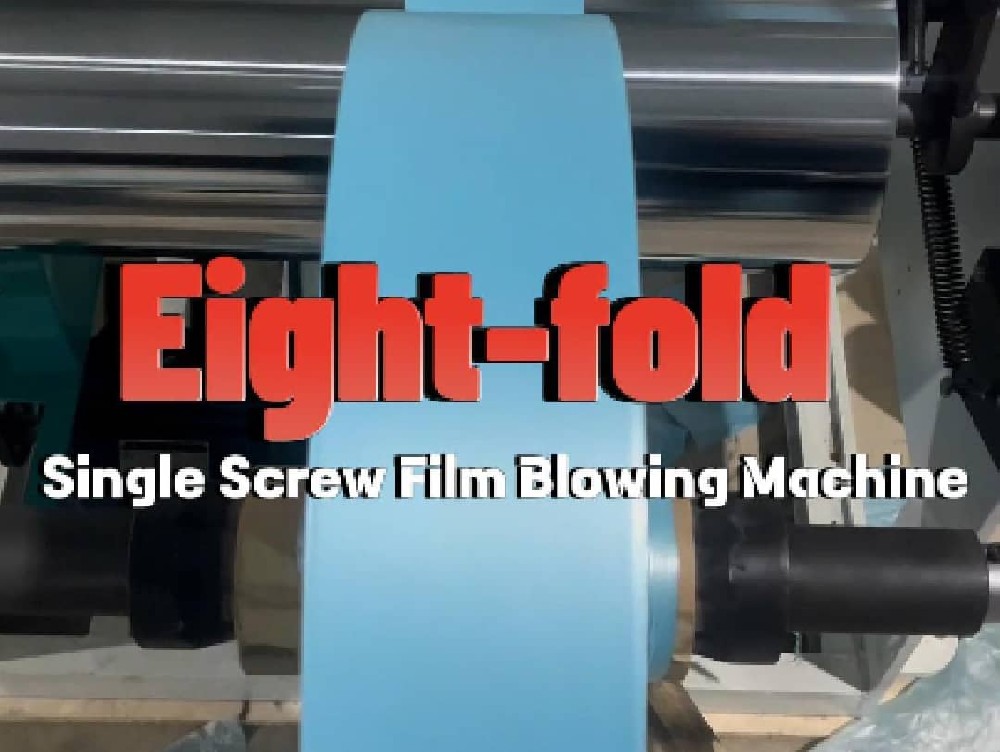Causes and Troubleshooting of Unstable Output in Film Blowing Machines
2025-03-17Although multilayer films can bring greater efficiency, the increased structural complexity poses new challenges for engineers. To better produce multilayer films, four key factors need to be considered:
Selection of polymer raw materials;
Choice of multilayer film blowing machine;
Process conditions of the film blowing machine.
When one or more of these factors are not fully considered, problems can arise in the co-extrusion of blown films. Below are five common issues related to unstable output in blown film co-extrusion, along with troubleshooting techniques for each problem.
Bubble instability encompasses various issues related to the stability of the extruded bubble. The main problems include output rupture, film hardening, frost line instability, and output fluttering.
Output Rupture:
Film rupture occurs when the molten material exiting the die is overstretched, leading to structural failure of the film. This happens when the melt strength of the extruded material is insufficient to meet the selected blow-up ratio (BUR). To avoid this issue, resin selection can be modified by incorporating materials with higher melt strength into the film structure to enhance overall melt strength. For example, adding low-density polyethylene (LDPE) to linear low-density polyethylene (LLDPE) films can improve their overall melt strength.
Film Hardening:
Film hardening occurs when the molten polymer is rapidly stretched in the machine direction (MD) and consequently hardens. This results in fluctuations in internal bubble pressure and bubble width. This problem can be avoided by reducing the draw-down ratio. Another solution is to modify resin selection to lower the overall extensional viscosity of the film, allowing the film to stretch more in the longitudinal direction without experiencing strain hardening.
Unstable Film Width:
In a stable process, the film width will remain at a constant height above the die and is controlled by cooling speed, die output, and film thickness uniformity. When a process becomes unstable, the film width also becomes unstable. One cause of this instability is an uneven temperature distribution in the extrudate. Variations in melt temperature can stem from improper screw design for the selected raw materials, screw wear, or heater or thermocouple failure. The melt temperature should be measured for each stream before merging to determine which melt layer is the source of the temperature variation. Once identified, the screw can be removed and inspected for polymer degradation and screw wear. The functionality of all heaters and thermocouples should also be checked. Another common cause of unstable film width is die blockage. Uneven die output may be due to the accumulation of degraded material in the die. To avoid this, the die should be regularly inspected for material buildup and cleaned as necessary.
Bubble Flutter:
Bubble flutter begins below the frost line and appears as linear marks on the bubble surface in the transverse direction (TD). This flutter is caused by high air velocity from the air ring. Reducing the blower speed or adjusting the air ring assembly to decrease airflow along the bubble surface will prevent bubble flutter. However, reducing airflow can lower the cooling efficiency of the air ring, potentially causing the frost line to drift from the die and leading to new issues. To avoid this, resin selection can be optimized to reduce the overall melt viscosity of the extrudate and lower the overall melt temperature.
Previous:How to solve the wrinkle of film blowing machine?
Next:Key Factors Affecting Blown Film Machine Prices: A Buyer’s Guide
Our Featured Products

YXMB-500 high speed bag making machine





